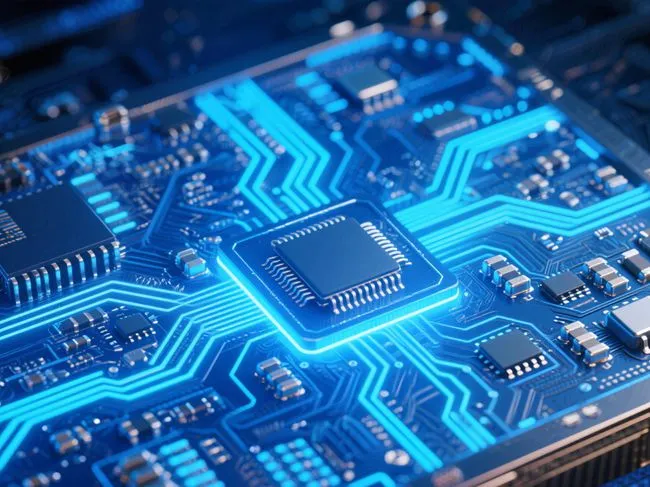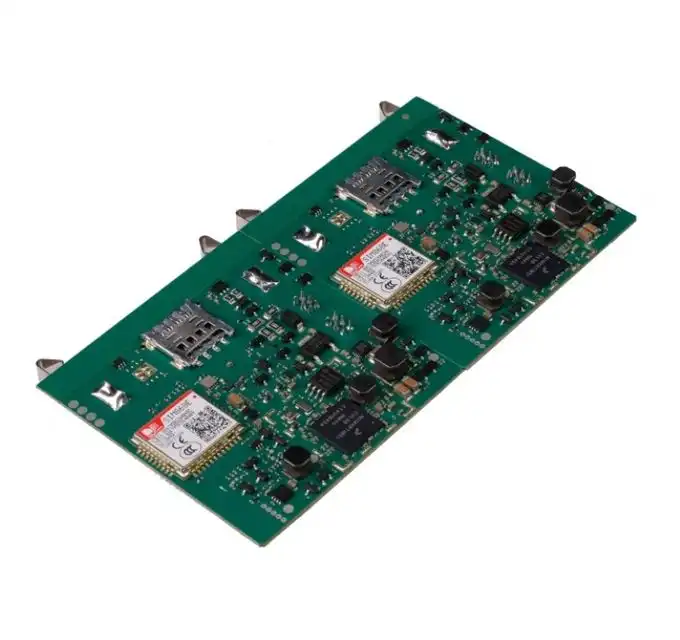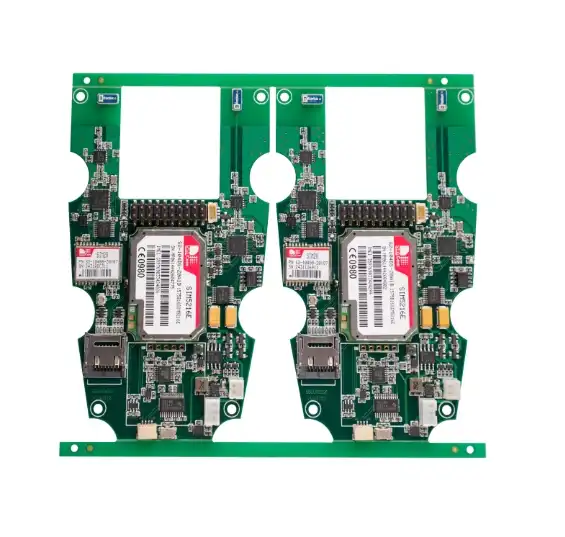Comprehending SMT and Through-Hole Assembly Techniques
PCB Assembly techniques have evolved significantly over the years, with Surface Mount Technology (SMT) and Through-Hole Assembly being the two primary methods used in modern electronics manufacturing. Understanding the nuances of each technique is crucial for making informed decisions about your PCB production process.
Surface Mount Technology (SMT)
SMT is a more recent innovation in PCB Assembly that has become the dominant method for many applications. In this technique, components are mounted directly onto the surface of the PCB without the need for through-holes. The process involves placing small components, known as surface mount devices (SMDs), onto pads or lands on the board's surface.
Key characteristics of SMT include:
- Compact design: SMT allows for higher component density, resulting in smaller and lighter PCBs.
- Automated assembly: The process is highly automated, allowing for faster production and reduced labor costs.
- Improved electrical performance: Shorter lead lengths result in reduced parasitic effects and better high-frequency performance.
- Double-sided assembly: Components can be mounted on both sides of the board, increasing design flexibility.
However, SMT also has some limitations. The smaller components can be more challenging to handle and inspect, and they may not be suitable for high-power applications due to heat dissipation concerns.
Through-Hole Assembly
Through-hole assembly is the traditional method of PCB Assembly, where component leads are inserted into holes drilled through the PCB and soldered on the opposite side. This technique has been used for decades and remains relevant for certain applications.
Advantages of through-hole assembly include:
- Mechanical strength: Components are more securely attached to the board, making it ideal for products subject to vibration or physical stress.
- Heat dissipation: Through-hole components can often handle higher power and generate less heat than their SMT counterparts.
- Easy prototyping and repair: Components can be more easily replaced or modified, making it suitable for prototyping and field repairs.
- Availability of specialized components: Some specialized or high-power components are only available in through-hole packages.
The main drawbacks of through-hole assembly are its lower production speed and the limitation on component density due to the need for drilled holes.
Factors Influencing the Choice Between SMT and Through-Hole Assembly
When deciding between SMT and through-hole assembly for your PCB Assembly project, several factors come into play. Each technique has its strengths and weaknesses, and the optimal choice depends on your specific requirements.
Production Volume
Production volume is a significant factor in choosing between SMT and through-hole assembly. SMT is generally more cost-effective for high-volume production due to its higher automation potential and faster assembly speed. For small production runs or prototypes, through-hole assembly might be more economical due to lower setup costs.
Component Size and Density
SMT allows for much higher component density, making it the preferred choice for compact designs. If your PCB design requires a high number of components in a limited space, SMT is likely the better option. Through-hole components are typically larger and require more board real estate.
Electrical Performance
For high-frequency applications, SMT often provides better electrical performance due to shorter lead lengths and reduced parasitic effects. However, through-hole components can be advantageous in high-power applications where heat dissipation is a concern.
Mechanical Stress
If your product will be subjected to significant mechanical stress, vibration, or extreme temperatures, through-hole assembly might be the better choice. The mechanical connection provided by through-hole mounting is generally stronger and more resistant to environmental factors.
Repairability and Field Service
Through-hole assemblies are typically easier to repair and modify in the field. If your product requires frequent servicing or upgrades, this could be an important consideration.
Component Availability
While SMT components are widely available for most applications, some specialized or high-power components may only be available in through-hole packages. This could necessitate the use of through-hole assembly for certain parts of your design.
Hybrid Approaches and Future Trends in PCB Assembly
As PCB Assembly techniques continue to evolve, manufacturers are increasingly adopting hybrid approaches that combine the benefits of both SMT and through-hole assembly. This allows for greater flexibility in design and can optimize performance, cost, and reliability.
Mixed Technology Boards
Many modern PCBs use a combination of SMT and through-hole components. This approach, known as mixed technology or hybrid assembly, allows designers to leverage the advantages of both techniques. For example, a board might use SMT for most components to achieve high density, while using through-hole for connectors or high-power components that require stronger mechanical attachment or better heat dissipation.
Advanced SMT Techniques
The PCB Assembly industry continues to push the boundaries of SMT technology. Some emerging trends include:
- 3D component stacking: This technique allows for even higher component density by stacking components vertically.
- Embedded components: Some components can be embedded within the PCB layers, further increasing density and improving electrical performance.
- Micro-via technology: This allows for smaller, higher-density boards with improved signal integrity.
Automation and Industry 4.0
The future of PCB Assembly is moving towards greater automation and integration with Industry 4.0 principles. This includes:
- Advanced robotics for component placement
- AI-driven quality control and defect detection
- Real-time monitoring and adjustment of assembly processes
- Integration with supply chain management systems for just-in-time production
These advancements are making SMT even more efficient and cost-effective, potentially further reducing the use of through-hole assembly in many applications.
Environmental Considerations
As environmental concerns become more prominent, PCB Assembly techniques are evolving to become more sustainable. This includes:
- Lead-free soldering processes
- Use of more environmentally friendly materials
- Design for recyclability and ease of disassembly
- Energy-efficient manufacturing processes
These trends may influence the choice between SMT and through-hole assembly, with SMT generally offering advantages in terms of material usage and energy efficiency.
Conclusion
Choosing between SMT and through-hole assembly for your PCB Assembly project requires careful consideration of various factors including production volume, component density, electrical performance, mechanical requirements, and repairability. While SMT offers advantages in terms of miniaturization and high-volume production, through-hole assembly still has its place, particularly for high-power applications and products subject to mechanical stress.
As PCB Assembly techniques continue to evolve, hybrid approaches and advanced technologies are opening up new possibilities for optimizing performance, cost, and reliability. When selecting a PCB Assembly supplier or manufacturer, look for partners who can offer both SMT and through-hole capabilities, as well as expertise in mixed technology boards. This flexibility will ensure that you can choose the best assembly method for each component of your design, resulting in optimal performance and cost-effectiveness for your electronic products.
FAQ
What is the main difference between SMT and through-hole assembly?
SMT involves mounting components directly on the PCB surface, while through-hole assembly uses holes in the board for component leads.
Which assembly method is better for high-volume production?
SMT is generally preferred for high-volume production due to its higher automation potential and faster assembly speed.
Are through-hole components becoming obsolete?
No, through-hole components are still widely used, especially for high-power applications and products that require strong mechanical attachment.
Advanced PCB Assembly Solutions for Your Electronics Projects | Ring PCB
At Ring PCB, we offer cutting-edge PCB Assembly solutions tailored to meet the diverse needs of modern electronics manufacturing. Our state-of-the-art facility is equipped with advanced SMT and through-hole assembly capabilities, allowing us to handle projects of any complexity. With our high-density stack-up technology and smart manufacturing processes, we deliver precision-engineered PCBs ideal for 5G, industrial control, medical devices, and automotive electronics. As your trusted PCB manufacturer and supplier, we ensure top-quality results and cost-effective solutions. Contact us at [email protected] to discuss your PCB Assembly requirements.
References
1. Johnson, A. (2022). "Comparative Analysis of SMT and Through-Hole Assembly Techniques in Modern Electronics Manufacturing". Journal of Electronic Assembly, 45(3), 112-128.
2. Smith, B. & Lee, C. (2021). "Advancements in Hybrid PCB Assembly: Combining SMT and Through-Hole Technologies". IEEE Transactions on Electronics Packaging Manufacturing, 33(2), 78-92.
3. Zhang, Y. et al. (2023). "Impact of Assembly Techniques on PCB Performance: A Case Study in High-Frequency Applications". International Journal of Electronics Design and Technology, 18(4), 205-219.
4. Brown, R. (2020). "Cost-Benefit Analysis of SMT vs. Through-Hole Assembly in Small to Medium Scale Production". Production Engineering Review, 29(1), 55-70.
5. Patel, K. & Nguyen, T. (2022). "Environmental Considerations in PCB Assembly: Comparing SMT and Through-Hole Processes". Sustainable Electronics Manufacturing, 7(2), 140-156.






